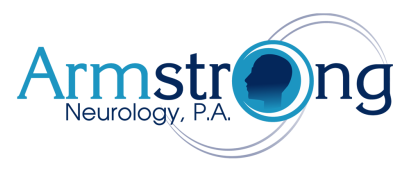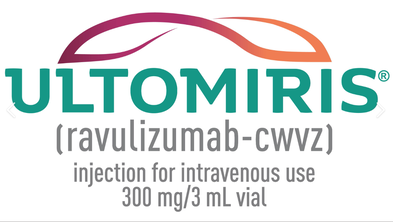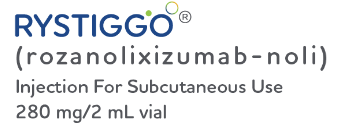Myasthenia

Myasthenia is a neurological condition that causes symptoms of weakness, double vision, droopy eyelids, and problems with swallowing. Individual patients may have a wide variety of presentations. The disease can also fluctuate in severity in a given patient over time.
What is myasthenia?
Myasthenia gravis is a chronic autoimmune neuromuscular disease characterized by varying degrees of weakness of the skeletal (voluntary) muscles of the body. The name myasthenia gravis, which is Latin and Greek in origin, literally means "grave muscle weakness." With current therapies, however, most cases of myasthenia gravis are not as "grave" as the name implies. In fact, for the majority of individuals with myasthenia gravis, life expectancy is not lessened by the disorder.
The hallmark of myasthenia gravis is muscle weakness that increases during periods of activity and improves after periods of rest. Certain muscles such as those that control eye and eyelid movement, facial expression, chewing, talking, and swallowing are often, but not always, involved in the disorder. The muscles that control breathing and neck and limb movements may also be affected.
What causes myasthenia gravis?
Myasthenia gravis is caused by a defect in the transmission of nerve impulses to muscles. It occurs when normal communication between the nerve and muscle is interrupted at the neuromuscular junction - the place where nerve cells connect with the muscles they control. Normally when impulses travel down the nerve, the nerve endings release a neurotransmitter substance called acetylcholine. Acetylcholine travels through the neuromuscular junction and binds to acetylcholine receptors which are activated and generate a muscle contraction.
In myasthenia gravis, antibodies block, alter, or destroy the receptors for acetylcholine at the neuromuscular junction which prevents the muscle contraction from occurring. These antibodies are produced by the body's own immune system. Thus, myasthenia gravis is an autoimmune disease because the immune system - which normally protects the body from foreign organisms - mistakenly attacks itself.
What are the symptoms of myasthenia gravis? Although myasthenia gravis may affect any voluntary muscle, muscles that control eye and eyelid movement, facial expression, and swallowing are most frequently affected. The onset of the disorder may be sudden. Symptoms often are not immediately recognized as myasthenia gravis.
In most cases, the first noticeable symptom is weakness of the eye muscles. In others, difficulty in swallowing and slurred speech may be the first signs. The degree of muscle weakness involved in myasthenia gravis varies greatly among patients, ranging from a localized form, limited to eye muscles (ocular myasthenia), to a severe or generalized form in which many muscles - sometimes including those that control breathing - are affected. Symptoms, which vary in type and severity, may include a drooping of one or both eyelids (ptosis), blurred or double vision (diplopia) due to weakness of the muscles that control eye movements, unstable or waddling gait, weakness in arms, hands, fingers, legs, and neck, a change in facial expression, difficulty in swallowing and shortness of breath, and impaired speech (dysarthria).
How is myasthenia gravis treated? Today, myasthenia can be controlled. There are several therapies available to help reduce and improve muscle weakness. Medications used to treat the disorder include anti-cholinesterase agents such as neostigmine and pyridostigmine, which help improve neuromuscular transmission and increase muscle strength. Immunosuppressive drugs such as prednisone, cyclosporine, and azathioprine may also be used. These medications improve muscle strength by suppressing the production of abnormal antibodies. They must be used with careful medical followup because they may cause major side effects.
What is myasthenia?
Myasthenia gravis is a chronic autoimmune neuromuscular disease characterized by varying degrees of weakness of the skeletal (voluntary) muscles of the body. The name myasthenia gravis, which is Latin and Greek in origin, literally means "grave muscle weakness." With current therapies, however, most cases of myasthenia gravis are not as "grave" as the name implies. In fact, for the majority of individuals with myasthenia gravis, life expectancy is not lessened by the disorder.
The hallmark of myasthenia gravis is muscle weakness that increases during periods of activity and improves after periods of rest. Certain muscles such as those that control eye and eyelid movement, facial expression, chewing, talking, and swallowing are often, but not always, involved in the disorder. The muscles that control breathing and neck and limb movements may also be affected.
What causes myasthenia gravis?
Myasthenia gravis is caused by a defect in the transmission of nerve impulses to muscles. It occurs when normal communication between the nerve and muscle is interrupted at the neuromuscular junction - the place where nerve cells connect with the muscles they control. Normally when impulses travel down the nerve, the nerve endings release a neurotransmitter substance called acetylcholine. Acetylcholine travels through the neuromuscular junction and binds to acetylcholine receptors which are activated and generate a muscle contraction.
In myasthenia gravis, antibodies block, alter, or destroy the receptors for acetylcholine at the neuromuscular junction which prevents the muscle contraction from occurring. These antibodies are produced by the body's own immune system. Thus, myasthenia gravis is an autoimmune disease because the immune system - which normally protects the body from foreign organisms - mistakenly attacks itself.
What are the symptoms of myasthenia gravis? Although myasthenia gravis may affect any voluntary muscle, muscles that control eye and eyelid movement, facial expression, and swallowing are most frequently affected. The onset of the disorder may be sudden. Symptoms often are not immediately recognized as myasthenia gravis.
In most cases, the first noticeable symptom is weakness of the eye muscles. In others, difficulty in swallowing and slurred speech may be the first signs. The degree of muscle weakness involved in myasthenia gravis varies greatly among patients, ranging from a localized form, limited to eye muscles (ocular myasthenia), to a severe or generalized form in which many muscles - sometimes including those that control breathing - are affected. Symptoms, which vary in type and severity, may include a drooping of one or both eyelids (ptosis), blurred or double vision (diplopia) due to weakness of the muscles that control eye movements, unstable or waddling gait, weakness in arms, hands, fingers, legs, and neck, a change in facial expression, difficulty in swallowing and shortness of breath, and impaired speech (dysarthria).
How is myasthenia gravis treated? Today, myasthenia can be controlled. There are several therapies available to help reduce and improve muscle weakness. Medications used to treat the disorder include anti-cholinesterase agents such as neostigmine and pyridostigmine, which help improve neuromuscular transmission and increase muscle strength. Immunosuppressive drugs such as prednisone, cyclosporine, and azathioprine may also be used. These medications improve muscle strength by suppressing the production of abnormal antibodies. They must be used with careful medical followup because they may cause major side effects.
Additional therapies:
* Of note, Dr. Wolfe is very special to me. He is presently the chairman of the neurology department at NYU Buffalo. In addition to being an exceptional neurologist and neuromuscular specialist, he was one of my professors for both residency and fellowship training. He is an outstanding chairman, professor and kind individual who provided great guidance for my career and understanding of neurology.
Thymectomy, the surgical removal of the thymus gland (which often is abnormal in myasthenia gravis patients), reduces symptoms in more than 70 percent of patients without thymoma and may cure some individuals, possibly by re-balancing the immune system. Other therapies used to treat myasthenia include plasmapheresis, a procedure in which abnormal antibodies are removed from the blood, and high-dose intravenous immune globulin, which temporarily modifies the immune system and provides the body with normal antibodies from donated blood. These therapies may be used to help individuals during especially difficult periods of weakness. A neurologist will determine which treatment option is best for each individual depending on the severity of the weakness, which muscles are affected, and the individual's age and other associated medical problems.
There are a number of medications that may exacerbate the symptoms of myasthenia. Click the link below to review a list of these medications.
Multimedia:
|
|
|






